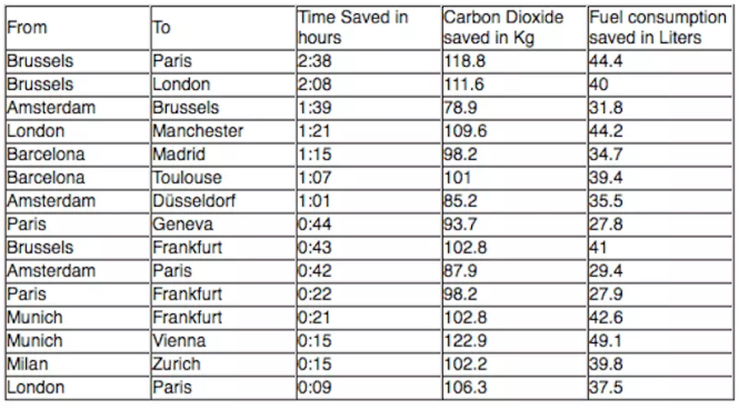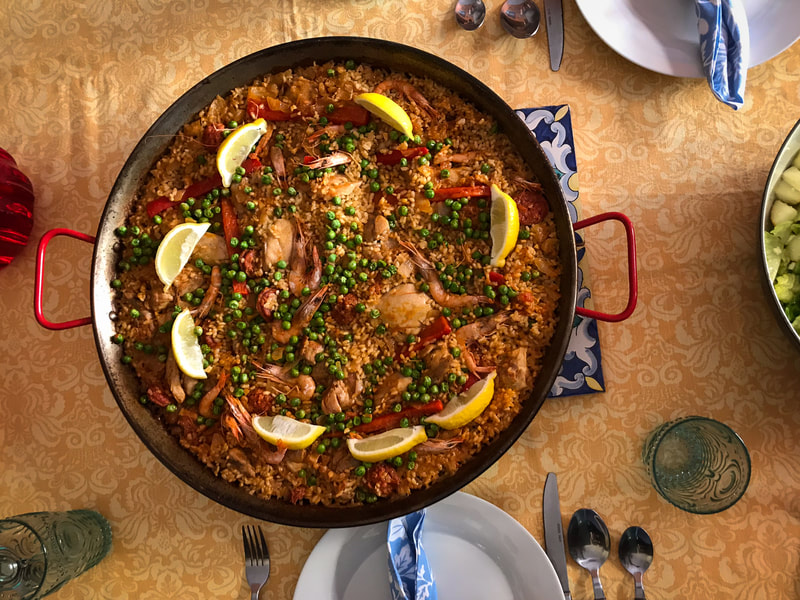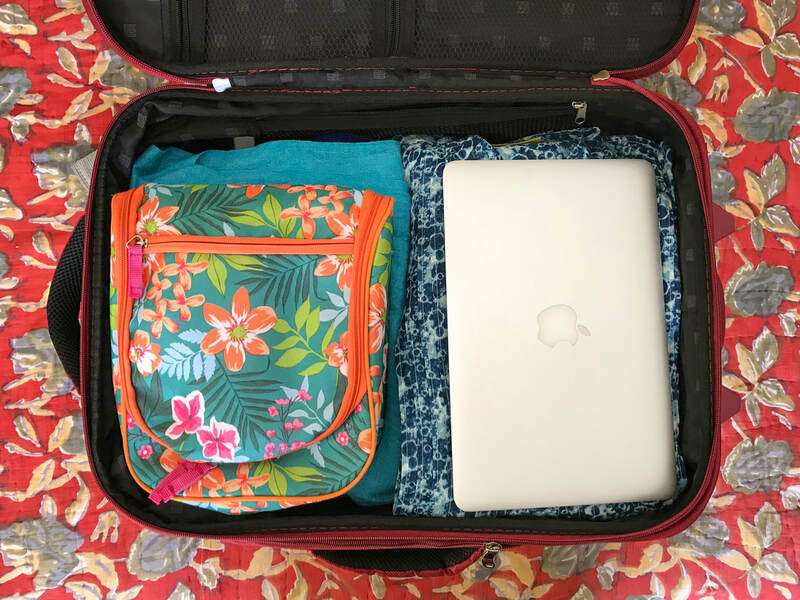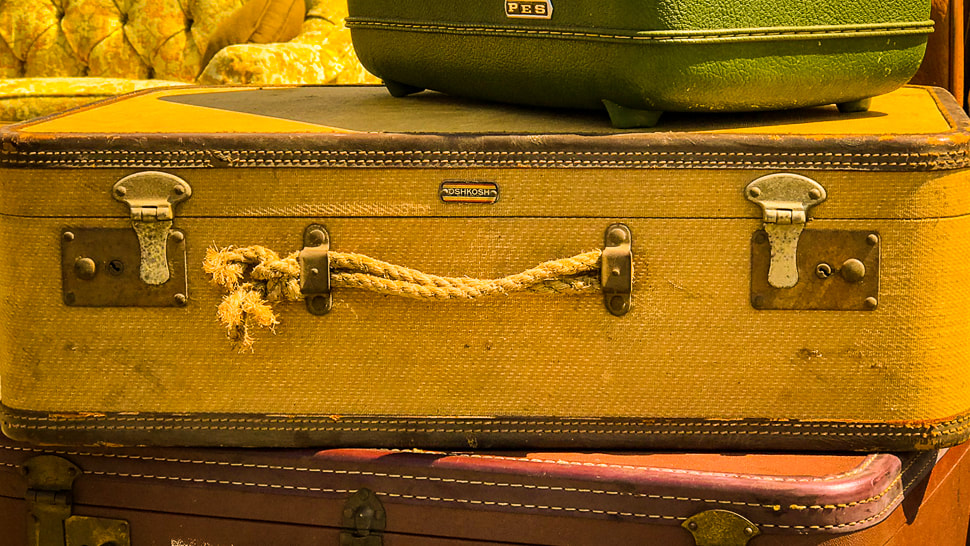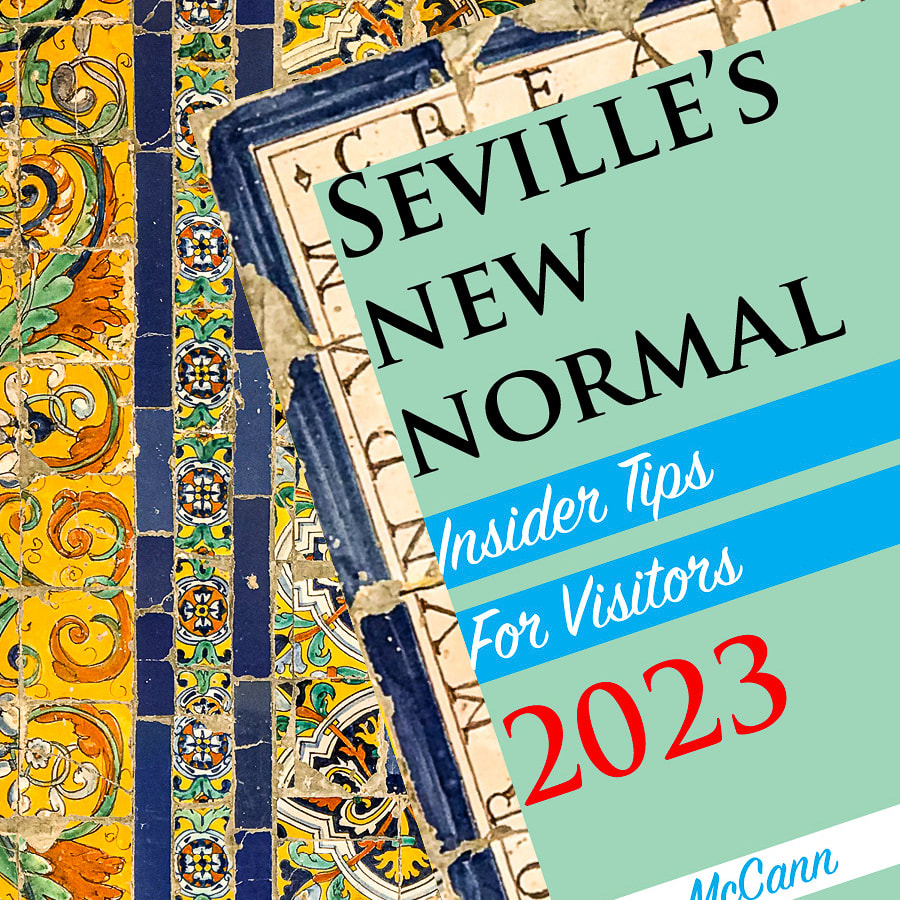|
“This place has the worst food in all of Seville,” I told a new acquaintance, as we sat down at a small outdoor table. “And the staff is downright hostile. We eat here every week.” The restaurant (which shall remain nameless) is strictly old school with dark wood, tile floors, a long bar, and a giant espresso machine. It happens to be the only eatery within shouting distance of the yoga studio I go to on Saturday mornings, and as everyone’s weekends are busy, we opt for the convenience. Over the years, the quality of the ham (a mainstay of breakfast in Seville) has deteriorated from passable to leathery to ghastly. And don’t even think about asking for any newfangled nonsense like whole wheat bread or avocado because it’s simply not happening. But it’s the hostility that’s truly astonishing. Maybe it’s because we arrive just before noon, the traditional cut-off for serving breakfast, forcing them to toast bread and make coffee for an extra fifteen minutes. “But isn’t that what they’re in business to do?” newcomers always ask in bewilderment. One would think. Maybe it’s because our yoga class is taught by an Englishwoman and attracts foreign students; they might feel we’re lowering the tone of the establishment. Who knows? Whatever sparked the conflict, they’ve taken the battle to the bathrooms. The Ladies’ lost its toilet seat ages ago, and a rag is now duct-taped in the opening that once held the doorknob. The automatic light shuts off so rapidly that even the most efficient user finds herself plunged into darkness at various awkward moments during the proceedings, requiring her to leap up and flap her hands in the air to restore illumination. Each week as we arrive, the tile floor around the rest rooms is mopped, creating a slippery hazard. Just this Saturday they upped the ante by pouring eye-watering caustic chemicals — I’m guessing bleach mixed with radioactive waste — into the toilet; the bartender walked out of the Ladies’, holding the bucket and grinning, as I headed in. Yet all week I look forward to spending time in that restaurant. Because much as I dislike the food, the attitude, and the lavatory, I love hanging out with my yoga friends. In Seville, choosing a place to eat is as much about tribal identity as it is about the particulars. As I sipped my coffee there last Saturday, I got to thinking about the three main food tribes in this city. The Traditional Tribe When I first arrived in Seville, just about every eatery served the same classic tapas, such as carrillada (pork cheeks), tortilla de España (Spanish omelet), and solomillo al whisky (braised pork with whisky sauce). Traditional bars tend to have gorgeous old tiles, ham legs hanging from the ceiling, and somebody’s abuela (grandmother) in the kitchen, making food the way her abuela taught her back in the days of Franco and food shortages. These dishes are simple, practical, and thrifty. Innovation and spices have no place on the menu. The Foodie Tribe The city’s recent foodie revolution couldn’t have been more shocking to local sensibilities if it had arrived in the city by flying saucer. Seemingly overnight we had Thai food, Peruvian-Japanese restaurants, Mexican taquerias, and impossible-to-define fusion places with amusing light fixtures and bewildering menus. If you’re heading to Seville, here are some you might want to check out. Bar Castizo, Calle Zaragoza, 6. They define their cuisine as old-school, and many dishes are, but they’re produced with artistic flourishes that demonstrate cutting-edge foodie sensibilities. The setting is charmingly hip. Don’t miss the rest rooms walls covered with domino tiles. Contenedor, San Luis, 50. Here you’ll find eclectic decor and some of the best eats in the city. On your way out, you’ll want to use the self-operated antique printing machine to print up a card so you can find your way back. Eslava, Eslava, 3. This one's so popular you'll have to come early to have any chance of elbowing your way into the crowded bar and back room; avoid the more formal restaurant area, as it's not worth the extra cost. Mamarracha Tapas y Brasas, Hernando Colon, 1 - 3. It describes itself as having urbanite conceptual character. Whatever that is. There’s a lovely vertical garden and offerings such as Thai salmon with seaweed; the food never disappoints. The Organic Tribe With the profusion of Airbnb apartments in the city, eating in has become more popular with vacationers, especially foreigners used to organic produce and products. This is a boon to the city’s up-and-coming health food industry. Some friends and I recently attended the third annual BioCultura, “an ecological products and responsible consumerism fair.” We spent several happy hours nibbling and sipping our way through the free samples, chatting with cheerfully eccentric vendors who were delighted when we purchased their olive oil, wine, and chorizo. (How is chorizo a health food? Made from pigs raised on granola and tofu, perhaps? I never did learn for sure.) I was delighted to run across some oatmeal, which is sold only in health food shops and not always easy to find. When I carried two large bags of rolled oats to the counter, the clerk shook her head. “We won’t sell you that.” “What? Why?” It took me some time to grasp what she was telling me: all the food in this, the largest booth in the entire fair, was for display purposes only. “If we sold it to you,” she explained in a “well, duh!” tone of voice, “we wouldn’t have any to display!” Ah, now I was on familiar ground. This store, like the restaurant I go to after yoga, exists for the convenience of the staff, not the customers. Perhaps the tribes aren’t that far apart after all. Many of us are lucky enough to move back and forth from one tribe to another. I make my own granola, Rich cooks traditional paella, and we often go out with friends to trendy new hotspots and old-style café-bars where abuelas rule the kitchen. And despite all the recent changes, it’s clear that the Sevillanos have not lost their traditional attitude towards eating. They have taught me that food is one of the great pleasures of life, and even the simplest meal should be embraced as if it were a gift. Because it is. YOU MIGHT ALSO ENJOY
8 Comments
“Wait, don’t eat that yet, let me get a shot of it.” When seriously gorgeous food hits the table, my husband knows there will be a short delay while I try to capture an image that does it justice. I’ve learned to work fast so our food doesn’t get too cold and Rich's hunger doesn’t get too acute. For most of us, a few quick clicks are enough and we’re ready to dive into the meal. But every once in a while I stumble across someone who takes food photography to a much higher level, crafting each shot like a classic painting. When I discovered the mouthwatering images shot by Croatian photographer Lili Basic on her Traveling Oven website, I kept saying to myself, “How does she do that?” I decided to find out. So I wrote to Lili at her home in Zagreb and asked if she would share a few of her food photography secrets with us. What is your earliest memory of photography? My interest in photography started when I was about 14 or 15 years old and I got my first camera as a gift from my parents (no smartphones at that time!). It was nothing fancy but it was pink and it was a camera so I was the happiest girl. At that time I wasn’t interested in learning anything technical about photography; I simply enjoyed taking pictures. You were born in Dubrovnik and lived in Scotland, Kazakhstan, Turkey, and Switzerland before returning to Croatia and settling in Zagreb. Do you find that photographing an unknown city is a good way to get to know its character? Oh definitely! I enjoy discovering new places with a camera in my hands. Because of it, I pay more attention to details and especially those areas that are not very touristy — the hidden alleys, narrow streets, and corners where you discover the true charm and character of the city. Having said that, sometimes it’s also nice to just walk around the new place without a camera, taking in the moment and not carrying heavy gear all the time. What do you hope your photos say to others? The most important thing for me is that my photos evoke emotions in viewers and that they tell a story. When somebody writes to me to say that my photo touched them in some way or made them remember a special moment — a smell or taste from their childhood or something like that — it makes me emotional every single time. And that is the main reason why I love photography so much. When did you start doing professional photography? In my mid 30s. All the time before that, I felt like something was missing in my life. Photography is so much more than a job to me, it’s the way I express myself and how I process a lot of my emotions and life challenges; it’s how I see and experience the world around me. I am forever grateful that I managed to get the courage I needed to start learning photography, building my business, and pursuing my dreams. What drew you to food photography? In 2014 I started taking my photography more seriously, learning and practicing every single day. I lived in Astana, the capital of Kazakhstan. It was winter at the time, and the winters there are very harsh and very, very cold — like -45 Celsius cold! So obviously, during the winter months you spend a lot of time inside. That meant that my usual subjects like travel, architecture, nature, etc. were all impossible to shoot; I had to come up with something interesting I could shoot at home. And that’s how I discovered the world of food photography and fell in love straight away! You use only natural light. Why? Light is what makes the photo beautiful and sometimes exceptional, and it helps in storytelling, too. I adore natural light, the play of light and shadows, the contrast it creates. For those learning to shoot food in natural light, I advise you to study the light in the area where you shoot — how it changes during the day, when it gets warmer and colder, when you get direct sunlight and when it’s softer light. The best light for food photography is the soft, diffused light we get on an overcast day; the worst is direct harsh sunlight. It’s best to have only one light source, such as a window, and to place your subject so that the light comes from the side ('sidelight') or from behind ('backlight'). Avoid placing the subject with light coming from the front, as that will result in a flat image with no contrast, and that is not visually pleasing. You took your photography to the next level with the online Photography Institute. What are some of the lessons you learned there? The Photography Institute gave me a great starting point in my photography journey. They taught me the technical side and some basic principles. For instance there’s the 'rule of thirds.' Imagine breaking an image down into thirds (both horizontally and vertically) so that there are 9 parts. If we place our subject in the intersections or along the lines, the photo becomes more balanced without becoming static, enabling the viewer to interact with it more naturally. I also learned about negative space, the area around the main subject in a photo. Negative space defines and emphasizes the main subject, drawing our eyes to it. It gives our eyes somewhere to rest and prevents an image from appearing too cluttered. Are there bad photography habits that people should let go of? For one thing, over-editing a photo (it’s good to know when to stop!). How do you know when you’ve taken a truly outstanding shot? Well, that definitely doesn’t happen on every shoot, especially for a perfectionist like myself. But honestly, you just feel it. I get really excited like a little kid when I feel that everything is working so well together: light, subject, colors, textures, shapes, composition — and that’s when I know I’m getting ‘the shot’! I’ll probably never produce masterpiece food photos like Lili’s, but she’s given me a lot to think about and play around with in my own work. To enjoy more of her mouthwatering images visit Lili's Instagram page and her Traveling Oven website. And for those of my readers who enjoy photographing food, I’d love to hear your best tips and secrets of success. Of course, your disaster stories are always welcome as well! YOU MIGHT ALSO ENJOY During one of our early visits to Spain, long before we’d ever imagined moving here, Rich rented a car to drive some American friends to a mountain village we’d heard was particularly quaint. It proved to be as adorable as I’d hoped, with slightly crumbling whitewashed houses, potted geraniums, and a small central plaza where grizzled old men sat taking their ease on a weathered park bench. As we zipped by, one of the men waved and shouted, “Estrecho! Estrecho!” Hmmm. The word sounded familiar from my Spanish classes. A greeting, perhaps? I couldn’t quite put my finger on the meaning … It wasn’t until our rental car was wedged firmly between two stone walls at a bend in the ever-skinnier back lanes that it came to me. “Narrow!” I exclaimed. But of course by then it was too late to avoid disaster. “What are we going to do?” asked one of our friends from the back seat. “Climb out the sunroof and abandon the vehicle? Call for a helicopter to airlift us out?” But Rich is made of sterner stuff. He kept inching forward and back, under the amused gaze of every able-bodied resident of the village, until eventually, with considerable shrieking of metal and loss of paint, he worked the car free. We took another route gingerly back to the plaza, and there, beside the men’s bench, we noticed a very large sign advising everyone to park there and walk. We now take such signs very seriously. In fact, we’ve made it one of our goals in life never to drive in Europe again if we can help it. This is not a commentary on the difficulty of negotiating European roads and traffic. Oh sure, they can be a bit daunting, but hey, Rich and I are both hardened veterans of Boston’s back streets, New York City at rush hour, and those desolate Arizona highways where UFOs are so frequently spotted. I grew up in California’s car culture, in an area with very limited public transit, and cars really were the only practical way to get around. I bought into the belief that driving long distances is a uniquely American style of independence; it’s practically patriotic (as our gas companies and car manufacturers will be the first to tell you). But now that I live in Spain, with excellent rail service to all of Europe and beyond, I’m delighted to abandon the “freedom of the road” in favor of the luxury of stress-free travel. I no longer wrestle with maps, panic when the GPS cuts out, or engage in heated discussions about why we missed our turn. I don’t need to try to figure out the meaning of road signs, comply with Byzantine parking restrictions, or fret about dings and scratches. Instead, I sit in civilized comfort with my coffee, Kindle, and relaxed travel companion, enjoying the scenery and chatting with fellow passengers. Rich likes to pass the time playing with his food. Try doing this while driving a car — or come to think of it, don't! Incredibly, many of my fellow Americans do not share my sentiments on the subject of trains, and 27 million of them will be renting cars this year during visits to Europe. Even our closest friends and relatives seem surprised we don’t think this is a sound idea. We often have to work very hard to dissuade them from renting a car at the Seville airport, driving it into our neighborhood in the center of town (a nightmare of Biblical proportions), seeking a parking place for upwards of a couple of hours, and finally giving up and driving to the city outskirts to deposit the car at a large parking garage, where it will remain for the duration of their stay. “It just feels wrong not to have a car,” they tell us, after Rich and I have spent half an hour traversing the city on foot to collect them from the car park. “We don’t want to be an imposition.” Another firmly embedded belief is that cars are somehow faster and more efficient than trains. In fact, if you’re traveling between European cities —from London to Paris, say, or Amsterdam to Brussels — you’ll find railways are not only quicker than driving, they’re often quicker than flying. Last September, when Rich and I took the high-speed Eurostar from London to Paris via the Chunnel, we shaved nine minutes off the time it would have taken by plane; not much, I’ll admit, but still, that was nine more minutes in Paris — and nine minutes we didn't have to spend in a dreary airport lounge. Average Time Saved Traveling by Train Instead of Plane Another great thing about trains is that they connect to other forms of public transit such as ferries and buses, meaning there’s virtually no part of Europe you can’t reach. So how do you figure out what is the fastest way to get from Point A to Point B in unfamiliar countries? Rich starts his transportation research with an app called Rome2rio. You type in the city of origin and your destination, and it lets you know the time and cost of various transit configurations involving trains, buses, ferries, cars, and planes. Rich then consults the DB Navigator app for fuller details about stations, timetables, and where the train stops along the way, in case we want to consider an interesting detour or link up with a ferry port. Don’t get me wrong; sometimes a car is the best option for getting where you need to go in Europe or anywhere else. But next time you’re sorting out transportation, before you automatically Google car rental agencies, take a moment to look at trains — and the ferries and other forms of transit they connect with. Railways make the journey far more interesting, offer a different kind of freedom, and remind us that travel is, at its best, a way to transcend our ordinary lives, experience the world more vividly, and recapture the rapture of being alive we may have felt in our younger years. As author Dave Matthes put it, “I've always felt that distant train whistles heard in the dead of night are the universe's way of letting us know the best days are neither ahead nor behind us...they're happening right now, cradled in the palms of our hands.” Let’s not allow them to slip through our fingers.
YOU MIGHT ALSO ENJOY “You wouldn’t believe the weird stuff people recommend taking along on trips,” Rich commented over breakfast this morning. He’d just spent half an hour perusing travel blogs and was still shaking his head in wonderment. “Bed sheets, dryer sheets, a steam iron.” His eyes strayed to the screen again. “Condoms; well, somebody thinks they’re getting lucky! Here’s one: a headlamp. Where are they traveling, down a mineshaft?” “I suspect those are younger travelers,” I said. “But yes, I’ll never understand other people’s packing styles. I read a post by one woman who says she never goes anywhere without a wine glass, and not a plastic one either. I always assume the first time her bag gets manhandled by a taxi driver, she then has to discard half its contents because they’re full of shattered glass.” When it comes to packing, I’m convinced that less is more. Just taking essential clothing, shoes, and electronics pretty much fills my little roll-aboard bag, leaving scant room for bulky extras like headlamps and bed sheets. However, I will admit that Rich and I always tuck in a few small items that might not be strictly mandatory but add a little extra comfort, hominess, and ease to our lives. Dragging around tons of excess baggage isn't much fun. This photo was taken at the end of a six-day luggage-free journey to France, when we brought nothing but a few essentials tucked in our pockets. On most trips, I travel with more creature comforts. For instance, we always carry our silliest wedding photos in a small folding cloth frame. Over the years this precious object has become festooned with good luck charms and religious medals from every corner of the world and serves as a reminder never to take ourselves too seriously. In my younger years, travel slippers were on my “optional” list, but I’ve now reclassified them as a must for overnight plane rides and downtime on the road. After a long day of hiking about, I appreciate a warm, cozy place to rest and so do my feet. Rich originally packed gloves only for arctic destinations, but now he’s discovered wearing them makes it far easier to lug heavy bags, including groceries, so they’ve become staples. And at this point, Rich insists I add duct tape to the list. We often have trips without emergencies (yes we do!) but now that it’s sold in handy, pocket-sized packets, it’s easy to take duct tape with us everywhere. Beware of cheap knock-offs! Last Thanksgiving in Seville, we staged a wind-up chicken race in our apartment’s hallway, marking the goal lines with ultra-cheap pseudo-duct tape. When the thrilling event was over and all the victory dances were done, we expected to simply peel off the tape and move on with our lives. Not so! The tape shredded and stuck, leaving gooey red stains on the marble floor, requiring hours of scraping and scrubbing. Lesson learned! Like many people these days, Rich and I are attempting to avoid wasteful, single-use plastics whenever possible, so I always slip one or two ultra-light cloth tote bags in a zip compartment of my shoulder bag. That way I don’t have to choose between feeling guilty about getting a plastic bag at the store or juggling groceries in my arms all the way back to the Airbnb. To avoid the need for disposable plastic cutlery, we acquired some lovely lightweight wooden forks and spoons last time we ate at Wagamama in Gatwick Airport. Of course, there are times when plastics are the only sensible solution. For instance, we always pack a handful of zip-lock bags for everything from food storage to transporting socks that somehow didn’t dry in time for our departure from the hotel. And to waterproof our suitcases on rainy days, Rich carries a couple of large garbage bags, which can be secured over our bags with (you guessed it) duct tape. While we rely on Google maps for local navigation, we always carry an old-fashioned paper map showing railway lines and ferry service in the region we’re visiting. Without it, I could easily overlook interesting detours and connections (“Hey, there’s a ferry to Albania from here!”) that give our journeys that extra bit of zing. And I always carry old-school paper business cards with my email and web address. These days most people we meet simply photograph the card, but we occasionally find ourselves in areas so remote that (gasp!) not everyone carries a smartphone. I'm fairly sure this brandy-maker we hung out with in rural Romania doesn't have a smartphone. But he really knows his way around a still. Your list of underrated extras is probably quite different from ours, and we’d love to hear what you find essential to happiness on the road. Don’t get me wrong; I’m not looking for excess stuff to clutter my travel life; as the Spanish proverb says, “On a long journey, even a straw weighs heavy.” But I am always willing to give a warm welcome to small objects that, as Marie Kondo so famously put it, “spark joy.” Because isn’t that what travel is really all about? |
This blog is a promotion-free zone.
As my regular readers know, I never get free or discounted goods or services for mentioning anything on this blog (or anywhere else). I only write about things I find interesting and/or useful. I'm an American travel writer living in California and Seville, Spain. I travel the world seeking eccentric people, quirky places, and outrageously delicious food so I can have the fun of writing about them here.
My current project is OUT TO LUNCH IN SAN FRANCISCO. Don't miss out! SIGN UP HERE to be notified when I publish new posts. Planning a trip?
Use the search box below to find out about other places I've written about. Winner of the 2023 Firebird Book Award for Travel
#1 Amazon Bestseller in Tourist Destinations, Travel Tips, Gastronomy Essays, and Senior Travel
BLOG ARCHIVES
July 2024
CATEGORIES
All
|


















